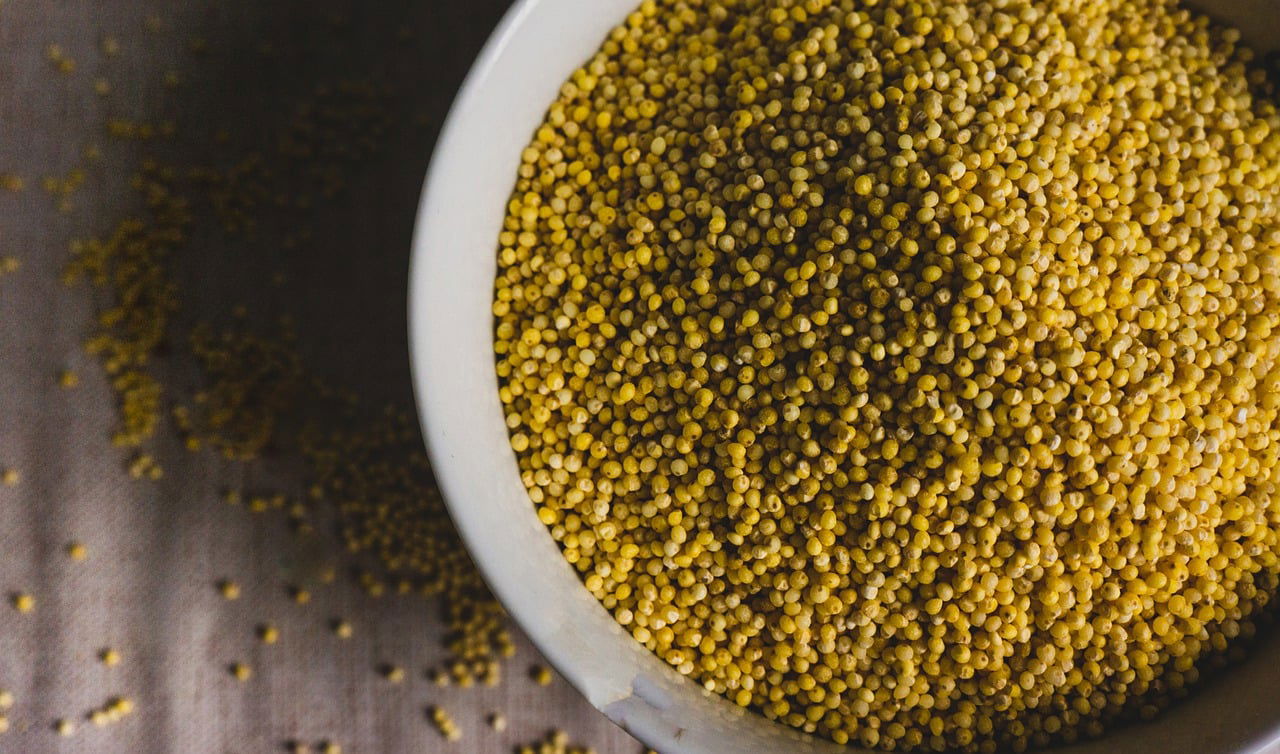
Foxtail Millet (Setaria italica (L.)) is one of the oldest of the cultivated millets in the world. It is grown in 23 countries within Asia, Africa and America. It is a self-pollinating, short-duration, C4 cereal, good for human consumption, poultry, cattle and bird feed. Foxtail millet ranks second among the millets produced in the world and provides food to millions of people dependent on poor or marginal soils in southern Europe and in temperate, subtropical and tropical Asia. In India, it is grown mainly in Andhra Pradesh, Karnataka, Telangana, Rajasthan, Maharashtra, Tamil Nadu, Madhya Pradesh, Uttar Pradesh, and to a small extent in the northeast states of India. It is used as an energy source for pregnant and lactating women, and for sick people and children.
State Wise Popular Varieties
-
Andhra Pradesh - SiA 3088, SiA 3156, SiA 3085, Lepakshi, SiA 326, Narasimharaya, Krishnadevaraya.
-
Bihar - RAU-1, SiA 3088, SiA 3156, SiA 3085, PS 4.
-
Karnataka - DHFt-109-3, HMT 100-1, SiA 3088, SiA 3156, SiA 3085, PS 4, SiA 326, Narasimharaya.
-
Rajasthan - Prathap Kangani 1 (SR 51), SR 1, SR 11, SR 16, SiA 3085, SiA 3156.
-
Tamil Nadu - TNAU 43, TNAU-186, Co (Te) 7, Co 1, Co 2, Co 4, Co 5, K2, K3, SiA 3088, SiA 3156, SiA 3085, PS 4.
-
Telangana - SiA 3088, SiA 3156, SiA 3085, Lepakshi, SiA 326.
-
Uttarakhand - PS 4, PRK 1,Sreelaxmi, SiA 326, SiA 3156, SiA 3085 .
-
Uttar Pradesh - PRK 1, PS 4, SiA 3085, SiA 3156, Sreelaxmi ,Narasimharaya, S-114.
Cultivation process of foxtail millet
Land Preparation:
-
Foxtail millet can grow in different types of soil but does best in well-drained loamy soils.
-
To prepare the land for planting, it should be plowed thoroughly, breaking the soil down into a fine texture. Typically, two to three plowings are enough.
-
Additionally, it's important to level the land to ensure that water from irrigation or rain spreads evenly across the field.
Sowing: Foxtail millet can be sown at different times depending on the season and region.
-
For the Kharif season, sowing occurs from July to August in Karnataka, in July for Tamil Nadu, Telangana, and Andhra Pradesh, and during the 2nd to 3rd week of July in Maharashtra.
-
For the Rabi season, sowing takes place from August to September in Tamil Nadu.
-
The recommended seed rate is 8-10 kg per hectare for line sowing and 15 kg per hectare for broadcasting.
-
It's also important to treat the seeds with Ridomil at 2 g per kg and Carbendazim at 2 g per kg to protect them from diseases.
-
When planting, maintain a spacing of 25-30 cm between rows and 8-10 cm between plants, and ensure the seeds are planted 2-3 cm deep in the soil.
Manure and Fertilizer Dosage:
-
To enhance the growth of foxtail millet, it's essential to apply compost or farmyard manure at a rate of 5-10 tones per hectare about a month before sowing.
-
For optimal crop yield, it's generally recommended to use fertilizers, including 40 kg of nitrogen, 20 kg of phosphorus (P2O5), and 20 kg of potassium (K2O) per hectare. It's best to base fertilizer application on soil test results for more precise needs.
-
When applying nitrogen, split it into two doses: apply half at the time of sowing and the other half 30 days after sowing. This method helps ensure the plants receive adequate nutrients throughout their growth cycle.
Intercultural Operation:
For broadcast crops, it's important to manage weeds effectively. The first weeding should be done 15 to 20 days after the seedlings emerge, followed by a second weeding 15 to 20 days after the first. This timely weeding helps ensure healthy crop growth by reducing competition for nutrients and resources.
Irrigation Practice: Foxtail millet grows well in both rainfed and irrigated conditions.
-
In rainfed areas, it depends primarily on rainfall, so maintaining proper soil moisture is crucial for good yields.
-
In irrigated regions, providing one or two irrigations during critical stages, such as tillering and grain filling, can significantly enhance crop performance and yield.
Pest and Disease Management
-
Pests: Common pests include shoot fly and stem borer. Regular monitoring and timely application of pesticides like Neem oil or synthetic insecticides can help manage pest infestations.
-
Diseases: Foxtail millet can be affected by downy mildew and smut. Use disease-resistant varieties and treat seeds with fungicides before sowing.
Harvesting:
-
Foxtail millet typically matures in 70 to 90 days, depending on the variety and growing conditions.
-
You can tell the crop is ready for harvest when the grains turn hard and golden-brown.
-
Harvesting can be done manually by cutting the plants close to the ground or by using a sickle for more efficiency.
Threshing and Storage:
After harvesting, the ears of foxtail millet are dried and then threshed to separate the grains. It’s important to ensure that the grains are properly dried, aiming for a moisture content of around 12%, to prevent spoilage. Store the grains in a cool, dry place to maintain their quality.
Foxtail millet is highly nutritious and adaptable to semi-arid regions, making it an important crop in dryland agriculture.
(Source- Indian Institute of Millets Research)
















